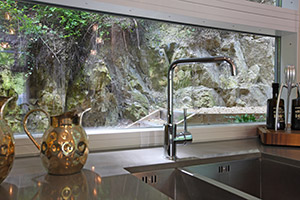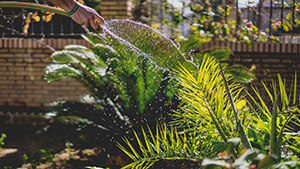Article written by: Phil Allen, Senior Floor Risk Consultant, Thomasons
The measures that housebuilders can take to save water are twofold: use alternative sources of water and introduce water-efficient devices within the home.
Firstly, there is rainwater harvesting in the form of water butts and below-ground storage tanks. These provide an alternative water source to mains water. Recycled rainwater can have numerous uses around the home, such as flushing toilets, use in washing machines or simply watering the garden. By incorporating some treatment into the rainwater harvesting and recycling system, it can be used for a range of clean water activities as well.
Waste not, want not
Greywater recycling can also be used. Water from sinks, dishwashers and washing machines can be filtered and reused to some extent around the home, such as for flushing toilets. However, recycled greywater is unlikely to be suitable for clean water uses such as drinking water or the preparation of food.
Within the home, housebuilders can equip homes with water efficient white goods. We’re all familiar with energy efficiency labels on appliances, but not many people are aware that white goods also have a water efficiency rating, which is displayed on the same label. Commonly found on the bottom-left hand corner of the label, estimated average annual water use per annum is displayed and will let you know if your washing machine or dishwasher is water efficient or not.
There are other water-saving products that can be fitted in new homes, or retrofitted into existing properties. Water-efficient brass goods such as taps with time flow controls or aerating spouts can be used. Water-efficient showers and WC cisterns provide more opportunity for water saving in the home.
Being able to track water usage is crucial. Most new homes include water meters and when people are financially incentivised to use less water, they often will.
No drain, no gain
 Sustainable drainage systems (SuDS) offer a wide variety of possibilities in terms of sustainable water management. The introduction of SuDS into any development proposal can enhance the viability of the scheme and will be one of the core requirements of the planning process. It is vital that surface water managements and SuDS are considered at the earliest possible stage of a development proposal.
Sustainable drainage systems (SuDS) offer a wide variety of possibilities in terms of sustainable water management. The introduction of SuDS into any development proposal can enhance the viability of the scheme and will be one of the core requirements of the planning process. It is vital that surface water managements and SuDS are considered at the earliest possible stage of a development proposal.
How water is being captured, attenuated, treated for pollutants and discharged, and whether it’s being done sustainably, plays a huge role in the success of a planning decision. Local Planning Authorities, Water Authorities and environmental regulators such as the Environment Agency place restrictions on the amount of surface water you can discharge from a development and will expect to see sustainable drainage measures incorporated into any development proposals.
http://www.thomasons.co.uk



Add new comment